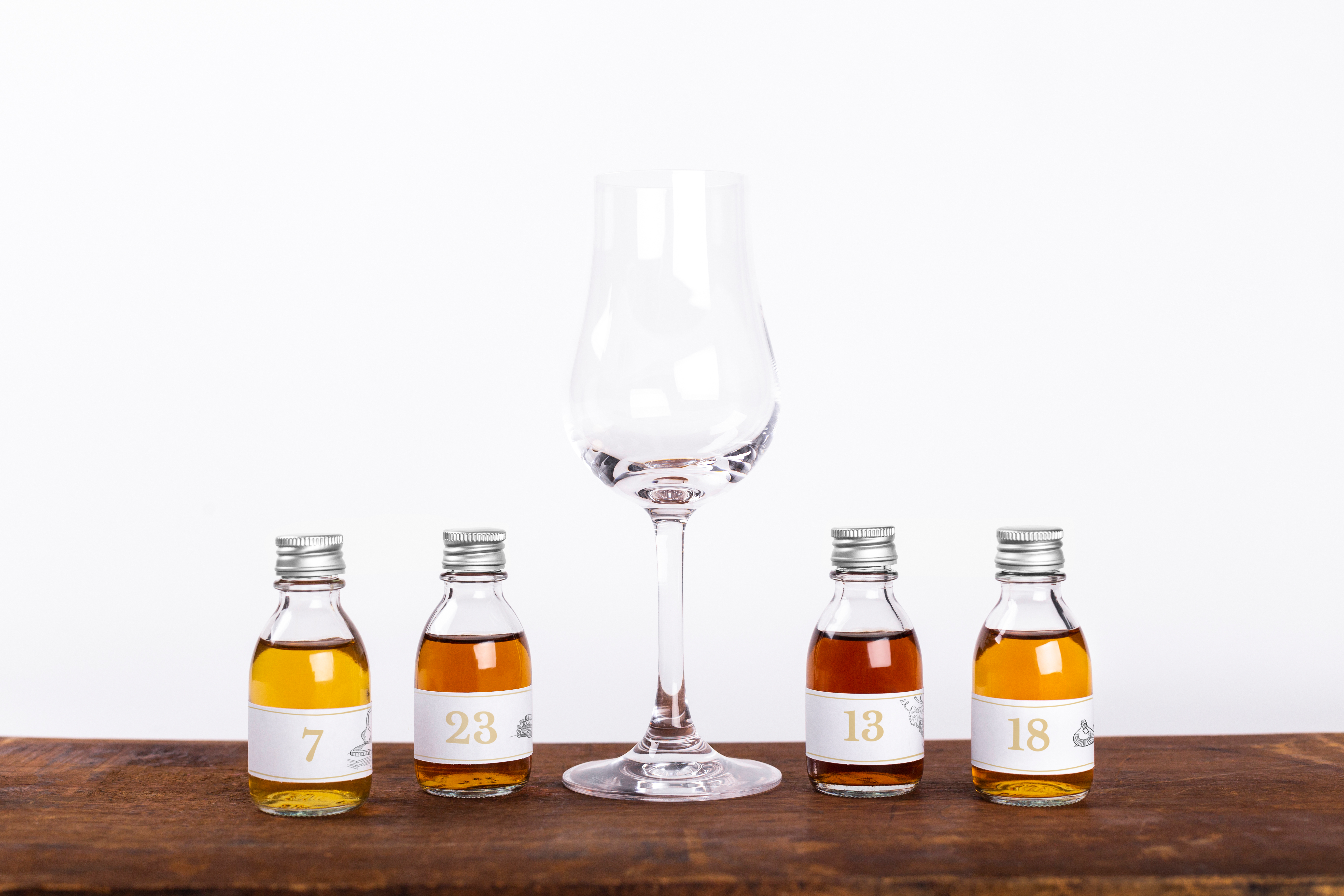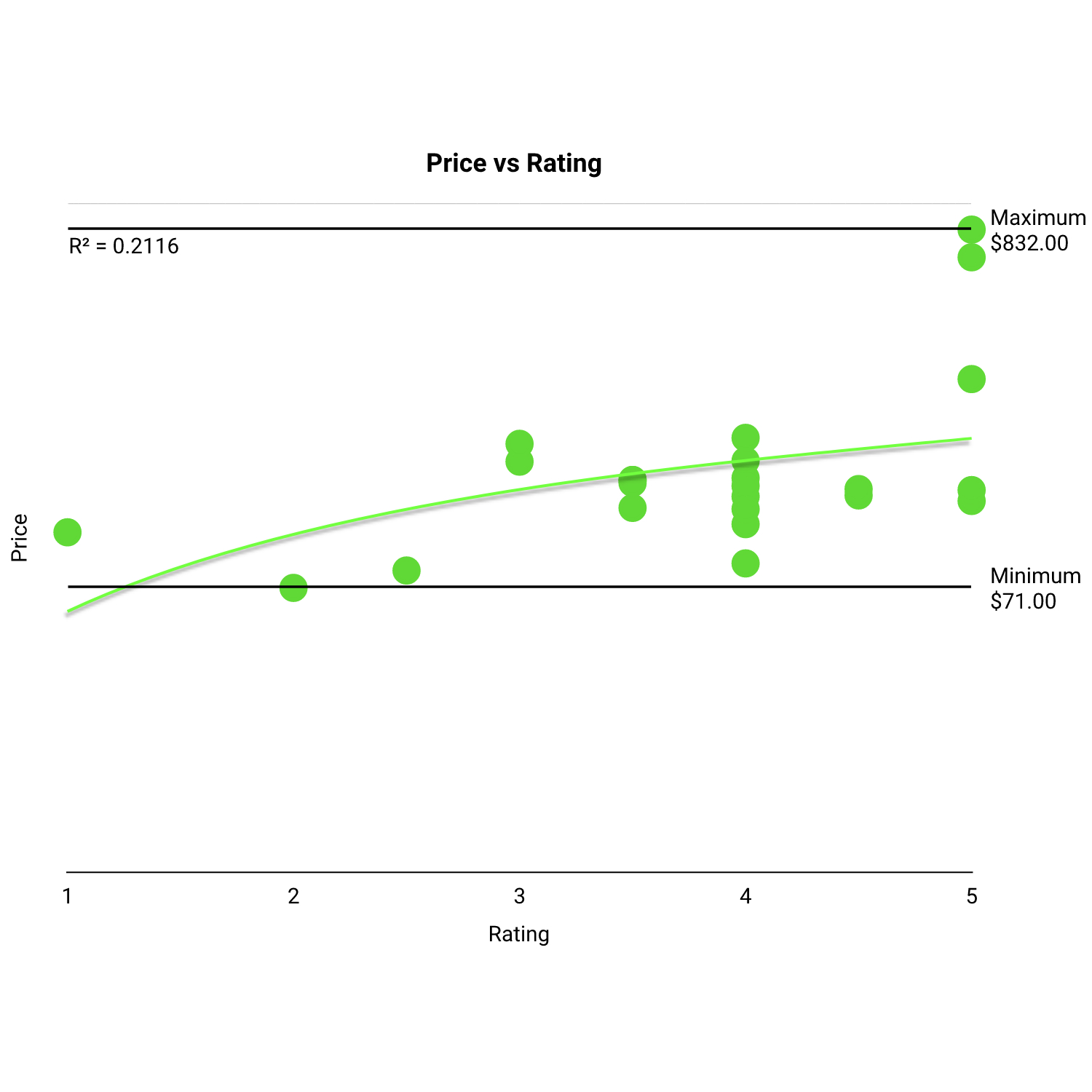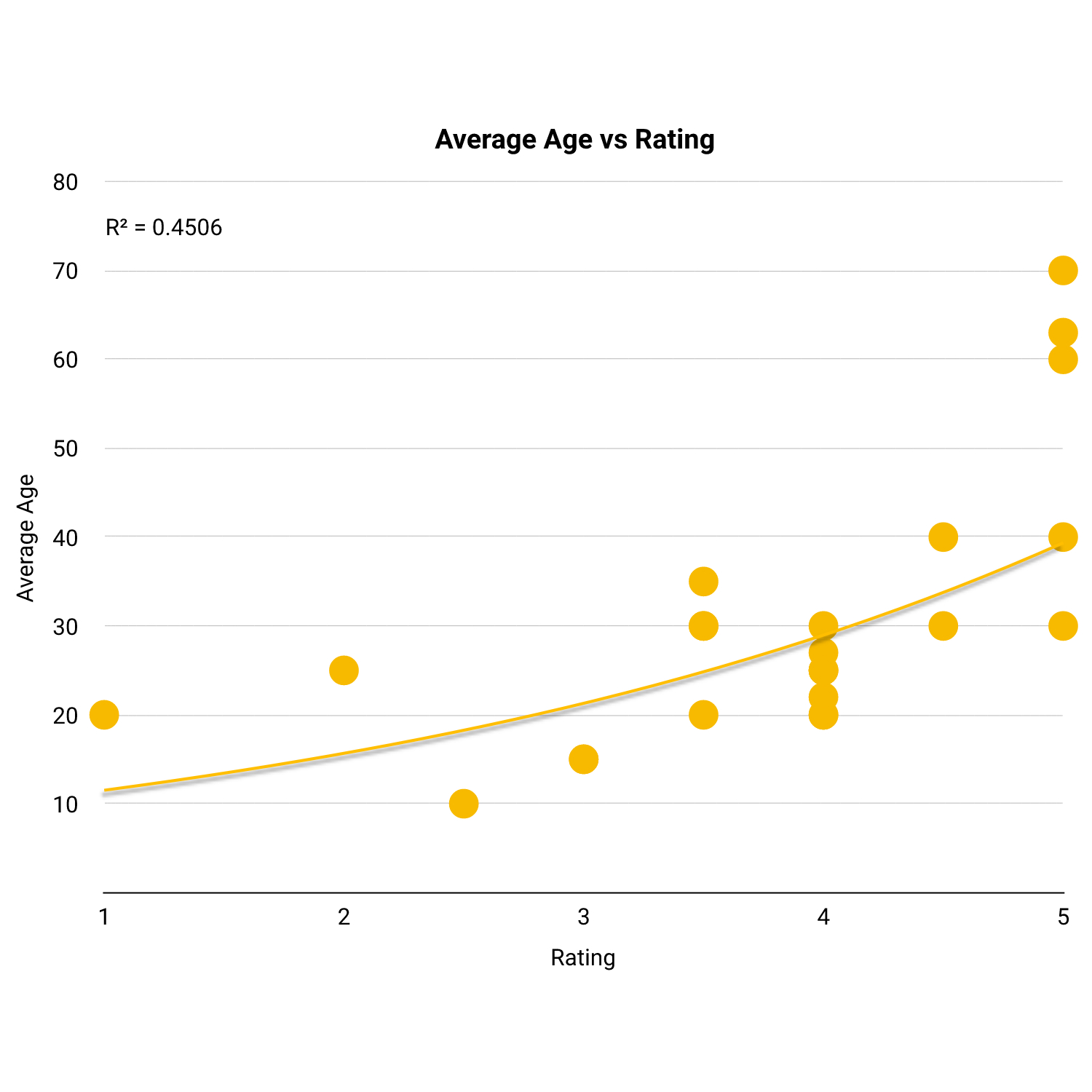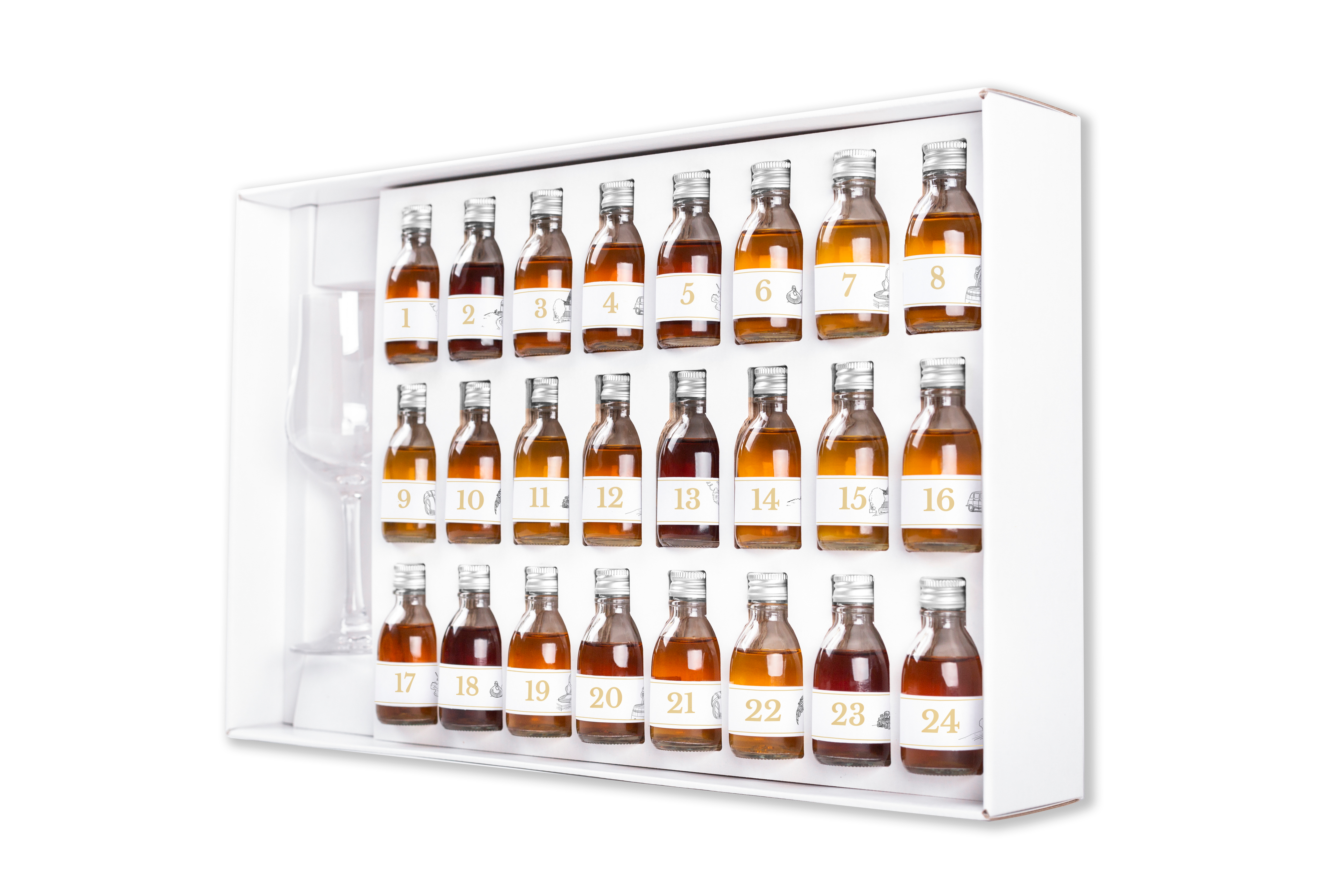Our annual Cognac Calendar was, once again, a huge success. But this year we were delighted to discover that a member of our Cognac community had taken the tasting process above and beyond what we could expect.

Joe Binney, a prolific poster on our popular Cognac Lover’s Facebook group and self-confessed tech/Cognac nerd, blew us away with his in-depth analysis. When we saw his fascinating post we just had to reach out and discover more, because this was no simple tasting review. What Joe had compiled was a detailed mathematical breakdown of personal ratings that correlated with either age or price.
Joe had us hooked. As fellow Cognac nerds, we automatically had a great connection. Who was this man and what drove him to create such a comprehensive overview of the Cognacs?
Who is Joe Binney?
Making contact with Joe was a joy. He’s the first to say that he’s no expert on the subject of Cognac. More that he’s an afficionado who’s using his strengths to improve his knowledge of eau-de-vie, his tasting ability, and—in his words—“Wants to calibrate his perception of flavors”.
He’s our kind of guy.

Joe is a numbers man. His background is in software engineering. He studied computer science, worked for Facebook for a while, and took a six-year journey with a stock-trading start-up where he played a pivotal role in developing a free trading app and growing the company into a force to be reckoned with.
With such credentials it made perfect sense that his tasting notes and details provided a whole bunch of data that he instinctively wanted to analyze. By doing this, he could extract meaningful insights that would help him learn and that he could share with others.
As an aside, we think that he’s perhaps underestimating his own abilities somewhat. Sure, he may well have only been seriously tasting Cognac for a year or two, but he is doing it in earnest. It’s certainly not going to take Joe long before his knowledge grows profoundly. It’s this shared passion for eau-de-vie that’s one of the many reasons we love the interactions on our Cognac Lovers Facebook group. So if you’ve not yet signed up, what are you waiting for?
One of the drivers behind his Cognac interpretations came from when he re-visited the notes he made when tasting Cognacs from the 2019 Calendar. Because he failed to give each a rating, he couldn’t easily determine which he enjoyed the most. Therefore, he was unable to accurately recall the ones he’d like to purchase again.
On receiving the 2020 version he was determined to put this right.
The other reasons for carrying out his research were:
- To further develop his palate
- To calibrate and hone his perception of flavors
- To discover new favorites
- Because it’s fun
These are surely the very factors most of us would say are behind the enjoyment of sipping different eaux-de-vie. Joe’s ability to take this data and create easy to understand graphs and tables will definitely help all of us on our tasting journey.
So let’s discover what he found out.
The Tasting Process, Ratings & the Correlation to Age and Price
The first step to understanding Joe’s analysis is to be aware of his tasting process. He told us that he enjoyed a single Cognac each evening, taking detailed notes as he did so:
- Step 1: Pour the Cognac into a glass. Remember, the presentation of each day’s miniature Cognacs is in unmarked bottles. Therefore the producer, age, and all details are anonymous—the perfect setup for a blind tasting session.
- Step 2: Consider the color. Known as the eye, this is an important element of Cognac tasting. In general, the darker the shade the longer you can expect the eau-de-vie to have been aged. Although it should be noted that the addition of certain substances (such as caramel) can artificially darken a Cognac, so this isn’t 100% true.
- Step 3: Let the Cognac breathe. Joe said that he began to do this as he heard many of the producers on the accompanying podcasts speak about the importance of this step. It allows the aromas and flavors to be released as they come into contact with the air.

- Step 4: Consider the nose. In other words, smell the Cognac. Take the time to determine the many aromas. Are they sweet, spicy, floral, fruity, etc. What comes to the fore? Are there any distinct bouquets, such as—perhaps—banana, a taste that Joe became increasingly aware of as he continued the process over the month.
- Step 5: Taste the Cognac. Determine the flavors, the body, and the finish. Try and distinguish particular nuances. Are there multiple layers? Or is it more of a blended taste experience that’s pleasant but doesn’t offer wholly identifiable elements.
- Step 6: Rate the Cognac. Give it a score of 1-5. At first, Joe used a scale of 1-10. But when he realized that most of his scoring fell between 5 and 9, he realized that a high score of 5 was more relevant.
The ratings are as follows:
- Would not drink again
- Liked some characteristics but disliked others
- Acceptable but nothing special
- Enjoyed everything about the Cognac, with at least one outstanding flavor or aroma
- Truly exceptional. Every sip reveals more layers, with multiple aromas and flavors standing out
These first 6 steps allowed him to create a blind taste test, much like we at Cognac Expert carry out when we present you with features, such as our XO family tastings.
Following this, Joe moved on to the following:
- Step 7: Listen to the podcast. It was only at this point that he discovered the producer of the Cognac he was drinking, as well as other elements, including quality and age. He would only have sipped about half of the Cognac before this stage. Finishing off the tasting while listening to the producer and Max’s overview allowed him to further enjoy as he tried to evidence the aromas and flavors being showcased. While he was doing this, he’d jot down an estimate of the age and price.
- Step 8: Look up the eau-de-vie on Cognac Expert. This allowed Joe to make a real-time determination of each Cognac, learning about the price, terroir, presentation, and more.
- Step 9: Note down all the criteria from the tasting session. This he did, including how accurate his estimation on age and price were. He ended up with a list that looked like this.

Come December 24th, Joe had created quite some data to analyze. He did this by entering all the information into a spreadsheet and carrying out what’s known as a regression. For all of us non-techie folk out there, this is a formula that computes all the information and plots it as a line that relates to two chosen factors.
Joe chose to correlate this data in two specific ways:
- Price vs. Rating
- Age vs. Rating
We can see this data in the two graphs below.


You’ll notice that each graph has an R2 number in the top left hand corner. This is known as the R squared value, a figure that measures the accuracy of the correlation of the data. This can range from 0-0.99. The closer it is to 0.99, the greater the relationship.
We can see that there is a better correlation between Joe’s rating and the age of the Cognac (at 0.45) than there is between his rating and the price (0.21). This means that the line that’s produced is closer to all of the points on the graph.
We have to say, we’ve never considered carrying out such a mathematical approach to Cognac tasting. What it actually showed Joe was that his perceived enjoyment of the Cognac (determined by the rating he gave) was far more strongly aligned to age than it was to price.
The Importance of the Findings
This age-to-rating relationship was something he found quite surprising. Before his analysis he considered that the price would be far more influential on his enjoyment of a Cognac. He tells us that the key takeaway’s from his experiment are:
- The age of a Cognac is more relevant than cost
- There are many, many superb Cognacs out there from little or unknown producers
- You don’t need to purchase from the most famous houses to get a great Cognac
- Smaller, little-known producers often represent better value for money
- He prefers very well-aged Cognac
One aspect Joe commented on was the podcasts that accompanied each Cognac. He really enjoyed them, especially the intimate stories, such as when some barrels for Mauxion were discovered in the cellars of a distant relative.
Joe told us that, following the discoveries of his blind taste tests and data-driven mathematical approach, his criteria for selecting Cognac has now been tweaked. Finding a wide range of Cognac in the USA is very challenging—discovering gems from the smallest Cognac producers is virtually impossible. That’s why he’s delighted that he can browse and choose from the Cognac Expert store much the same as he could if he were in the region itself.

Well, Joe—this is music to our ears. As our regulars will be well aware of, we champion the small, artisan Cognac houses. We’ve always promoted the unique creations of the highly talented individuals who run these craft enterprises. We’re delighted that you not only enjoyed the Cognacs, but that you presented us with this amazing data-driven method of understanding what your tasting sessions actually meant. So we’d like to say a great big thank you, both from the Cognac Expert team and on behalf of our wider global family.
Of course, the 2020 calendar is now in the past. It was a strictly limited production that sold out fast. We’re already in the presale phase for the 2021 edition. Discover more about it here.
Until then, we’ll continue to bring you wonderful offerings. This will include, of course, those from the big 4 but especially from the lesser-known and undiscovered artisans. It’s these small houses that are, in our humble opinion, home to the craftspeople responsible for bringing some of the greatest Cognac creations you’ll ever get to taste to. And long may that continue.
The list of the 24 Calendar Cognacs
– Vaudon XO Fins Bois
– Godet Fins Bois 15 years
– Marancheville XO Grande Champagne
– Mauxion Fins Bois Lot 49
– Francois Voyer XO Gold
– Pasquet Christmas XO Grande Champagne
– Vallein Tercinier XO Vielle Reserve
– Ordonneau Domaine de la Grolette Tres Vielle Reserve
– Leyrat XO Hors D’Age
– Bache-Gabrielsen Hors D’Age
– Maxime Trijol XO Classique
– Painturaud Freres Hors D’Age Grande Champagne
– Ordonneau Domaine de la Grollte Extra de Borderies
– Raby XO
– Bache-Gabrielsen XO Premium
– Godet Single Cru 22 years
– Marancheville L’Exemplaire N°3
– Pasquet L’Organique
– Painturaud Freres XO Grande Champagne
– Vallein Tercinier Hors D’Age
– Maxime Trijol XO Grande Champagne
– Leyrat XO Elite
– Raby Extra
– Mauxion Petite Champagne







